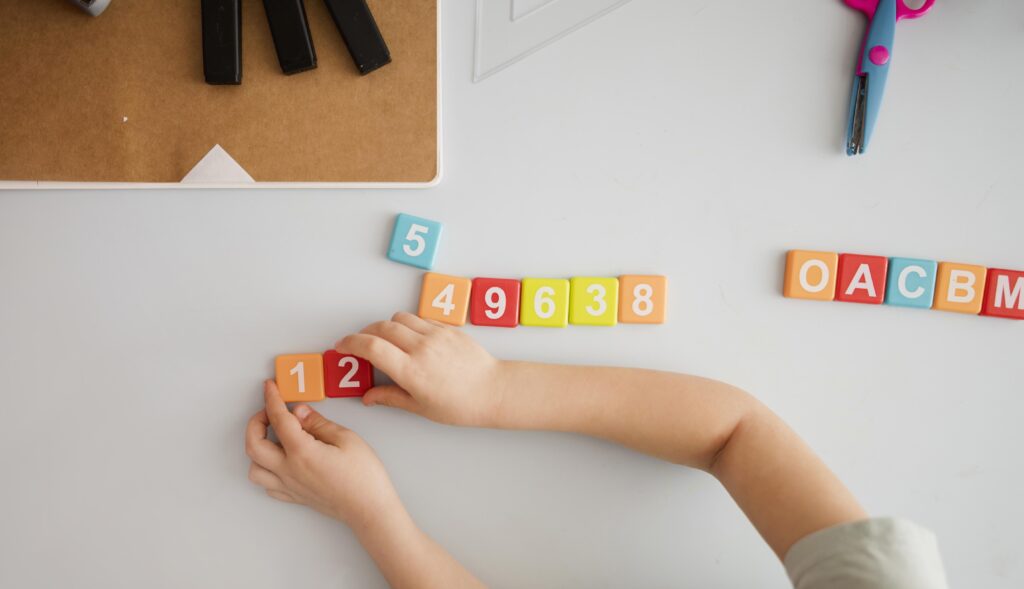In this charming companion to Mouse Paint, Ellen Stoll Walsh introduces the concept of counting forward and backward in a suspenseful story that will keep young readers guessing.’The rhythm follows the illustrations in a glissando; one can almost hear the background music.’–The Horn Book

Mouse Count
(9780152002664)
Written & illustrated by Ellen Stoll Walsh
Published by HMH Books
Theme/topic: Counting and Narrative
This charming story supports early maths and literacy development. As a hungry snake finds and counts ten mice one by one, children are invited to practise counting forward and backward, reinforcing the concept of matching quantities with numbers (AC9MFN01 – Foundation Year, Mathematics).
The story has clear features of a narrative, which create opportunities for children to share ideas about events, such as the problem and its resolution, and the characters in the text (AC9EFLE02 – Foundation Year, English). Children can also retell the story through drawing, role-playing, or sequencing events, building their comprehension and creative expression (AC9EFLE05 – Foundation Year, English).
With its simple text, bold illustrations, and engaging plot, Mouse Count is an ideal resource for integrating numeracy and literacy in early childhood learning.
Curriculum Alignment:
- These AC codes are suggested purely based on the book’s content and are provided for reference only.
AC9EFLE02 9.0 (English Language and Literacy Foundation): Respond to stories and share feelings and thoughts about their events and characters
• using drawing and beginning forms of writing to express personal responses to stories, poems or films
• discussing events and characters in texts, and connecting them to their own experiences
AC9EFLE05 9.0 (English Language and Literacy Foundation): Retell and adapt familiar literary texts through play, performance, images or writing
• drawing and role-playing characters or events
• sequencing pictures, which may involve using digital tools, to retell a story
AC9MFN01 9.0 (Mathematics Foundation): Name, represent and order numbers including zero to at least 20, using physical and virtual materials and numerals
• responding to a request to collect a quantity of objects or reading a numeral and selecting the associated quantity of items from a collection to match the number required; for example, collecting 9 paint brushes after hearing the word ‘nine’
• recognising the order in the sequence of numbers to (20) and identifying the number that is “one less” than a given number and the number that is “one more”; for example, playing instructive card games that involve reading and ordering number cards; using counting songs, story books and rhymes to establish the forwards and backwards counting sequence of numbers in the context of active counting activities
• understanding and using terms such as “first”, “second”, “third”, … “fifth”… to indicate ordinal position in a sequence; for example, creating a number track using cards with the numerals zero to (20) and describing positions using terms such as first, last, before, after, between
• recognising, writing and reading numerals written on familiar objects; for example, in images, text or illustrations in story books; writing a numeral on a container as a label to show how many objects it contains
• connecting quantities to number names and numerals when reading and reciting stories and playing counting games or determining and reasoning about the size of sets of objects within First Nation Australians’ instructive games; for example, Segur etug from Mer Island in the Torres Strait region
Resources
Single Activities
Articles
-

Delightful Books and Activities for Children: Building Counting Skills Through Storytelling
Explore charming picture books and playful activities that teach early math concepts like counting and number sense. Perfect for engaging young learners through storytelling and hands-on exploration.





Leave a Reply